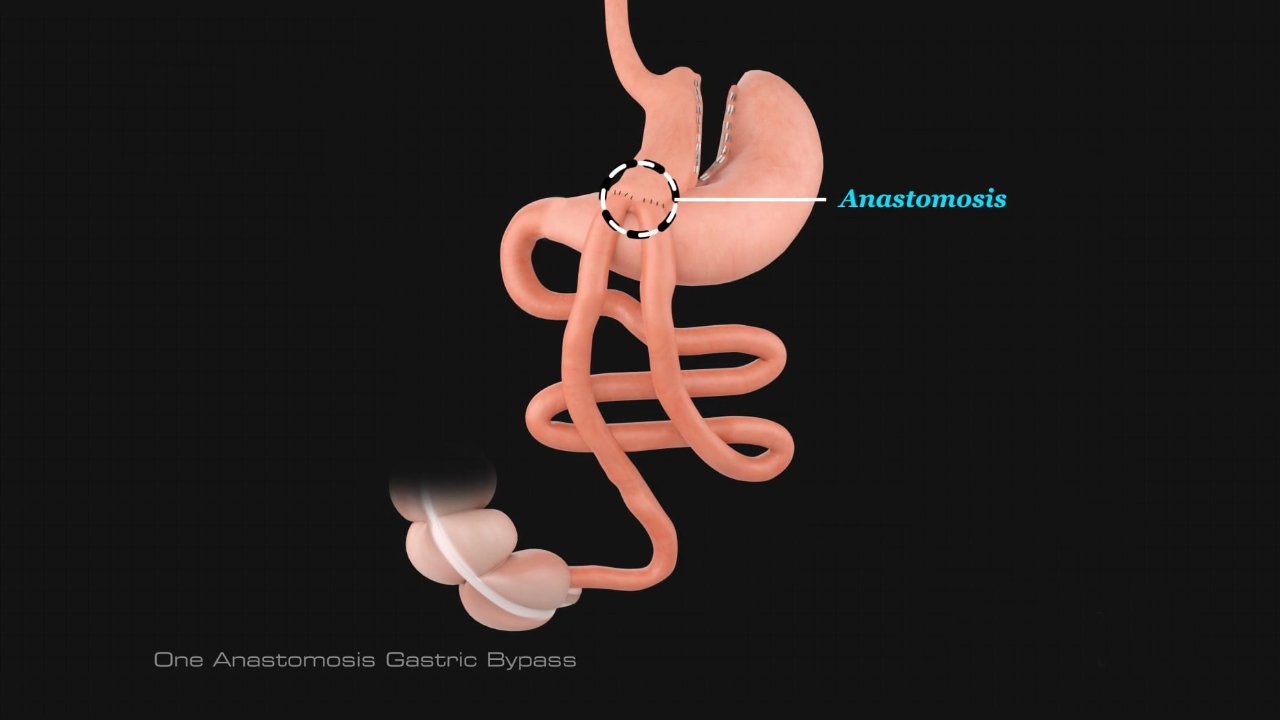Laparoscopic Single Anastomosis

Introduction:
Laparoscopic Single Anastomosis, also known as Single Anastomosis Duodenal Switch (SADS) or Mini Gastric Bypass, is a minimally invasive surgical procedure used to treat obesity and related health conditions. This procedure has gained popularity due to its effectiveness and lower risk compared to traditional open surgeries. In this blog, we will delve into the types, and conditions for which it is recommended, and the treatment process.
Types of Laparoscopic Single Anastomosis:
There are two primary types of Laparoscopic Single Anastomosis procedures:
- Sleeve Gastrectomy with Duodeno-Ileal Anastomosis (SG-DIA): In this procedure, a large portion of the stomach is removed, leaving a banana-shaped “sleeve” behind. The remaining portion of the stomach is then connected to the lower part of the small intestine (duodeno-ileal anastomosis). This restricts food intake and reduces calorie absorption.
- Loop Duodenal Switch (LDS): LDS involves creating a smaller stomach pouch similar to sleeve gastrectomy. Additionally, a loop is formed in the small intestine, which is then connected to the new stomach pouch. This results in a restriction of food intake and reduces calorie absorption, similar to SG-DIA.
Conditions for Laparoscopic Single Anastomosis:
Laparoscopic Single Anastomosis is recommended for individuals who meet specific criteria, including:
- Obesity: Candidates should have a Body Mass Index (BMI) of 35 or higher with obesity-related health conditions or a BMI of 40 or higher without comorbidities.
- Failed Non-Surgical Interventions: Individuals who have unsuccessfully tried non-surgical weight loss methods like diet and exercise may be considered for this procedure.
- Obesity-Related Health Issues: Candidates with obesity-related health conditions like type 2 diabetes, high blood pressure, sleep apnea, or heart disease may benefit from Laparoscopic Single Anastomosis as it can improve or resolve these conditions.
Treatment Process:
- Preoperative Assessment:Before the surgery, patients undergo a thorough evaluation, including physical and psychological assessments, to ensure they are suitable candidates.
- Surgery:The surgery is performed under general anesthesia, and small incisions are made in the abdomen. The surgeon removes a portion of the stomach, creating a sleeve or pouch, and forms the necessary anastomosis.
- Recovery:Patients typically stay in the hospital for a few days and gradually transition from a liquid to a solid diet over several weeks.
- Follow-Up Care:Regular follow-up appointments with the healthcare team are essential for monitoring weight loss, nutritional status, and addressing any potential complications.
Benefits of Laparoscopic Single Anastomosis
- Significant and sustainable weight loss
- Improvement or resolution of obesity-related health conditions
- Lower risk of complications compared to open surgeries
- Faster recovery and shorter hospital stay
- Enhanced quality of life and increased mobility.
Conclusion:
Laparoscopic Single Anastomosis is a highly effective bariatric surgery option for individuals struggling with obesity and related health conditions. It offers various benefits, including significant weight loss and improved overall health. However, it is essential to consult with a qualified healthcare provider to determine if this procedure is the right choice for you, considering your specific medical history and needs.
Contact Us
Get In Touch
Address
F 146/9 second floor shaheen bagh jamia Nagar New Delhi 110025
Phone
+91-9716952857
cure2world@gmail.com

